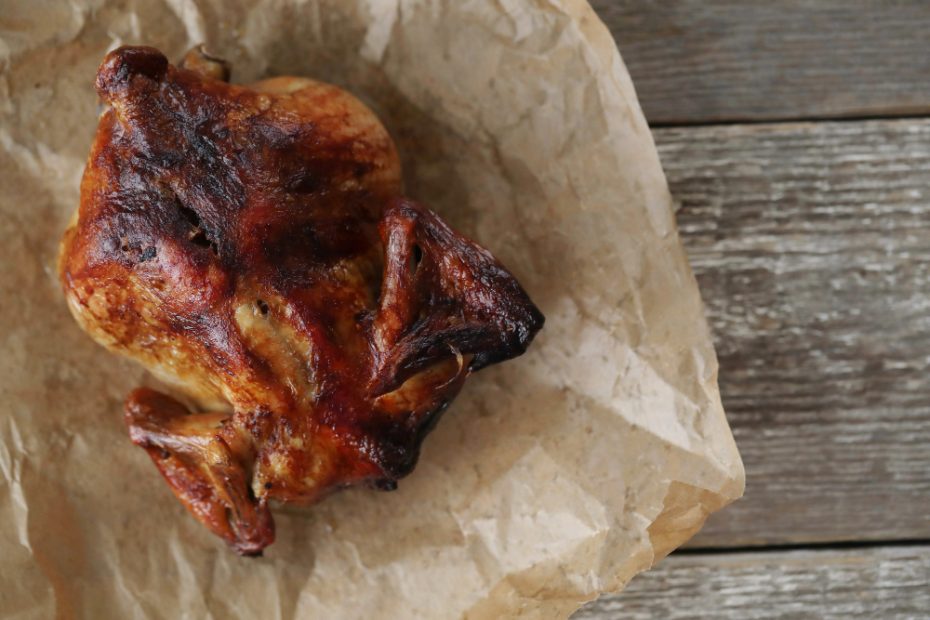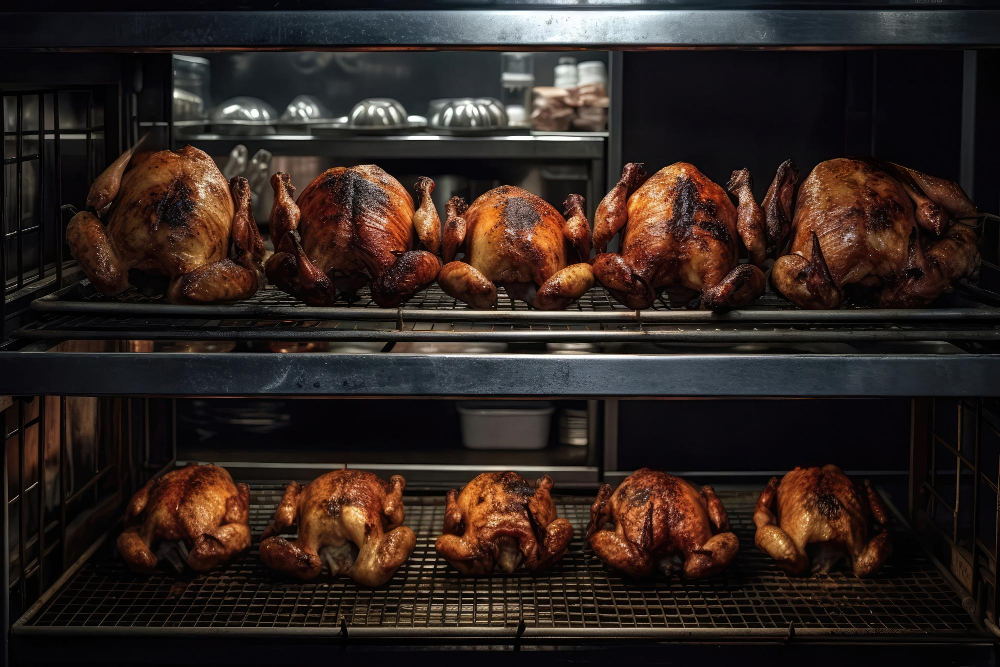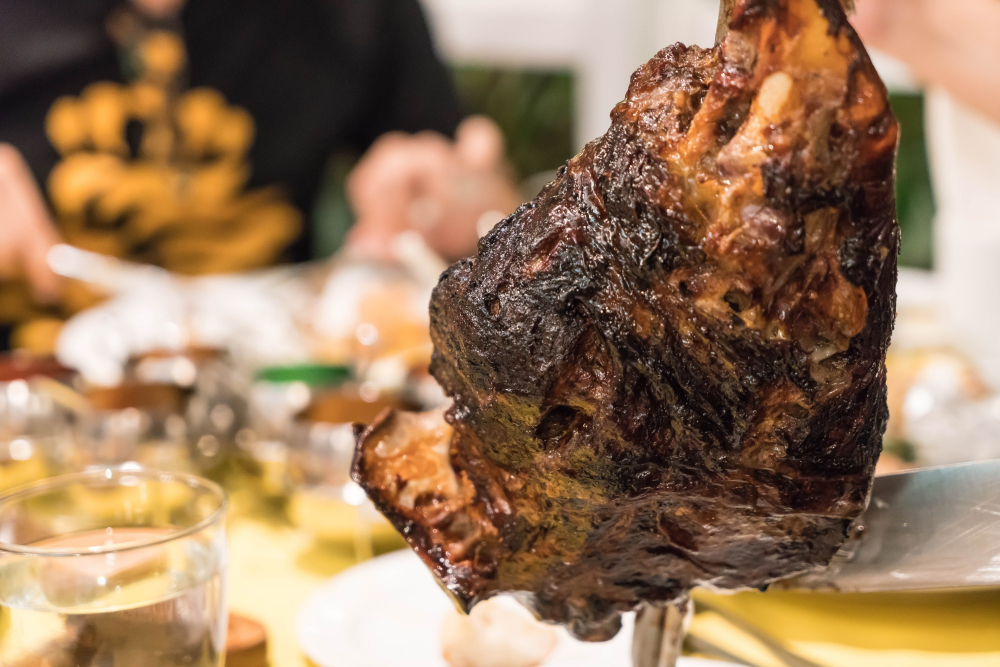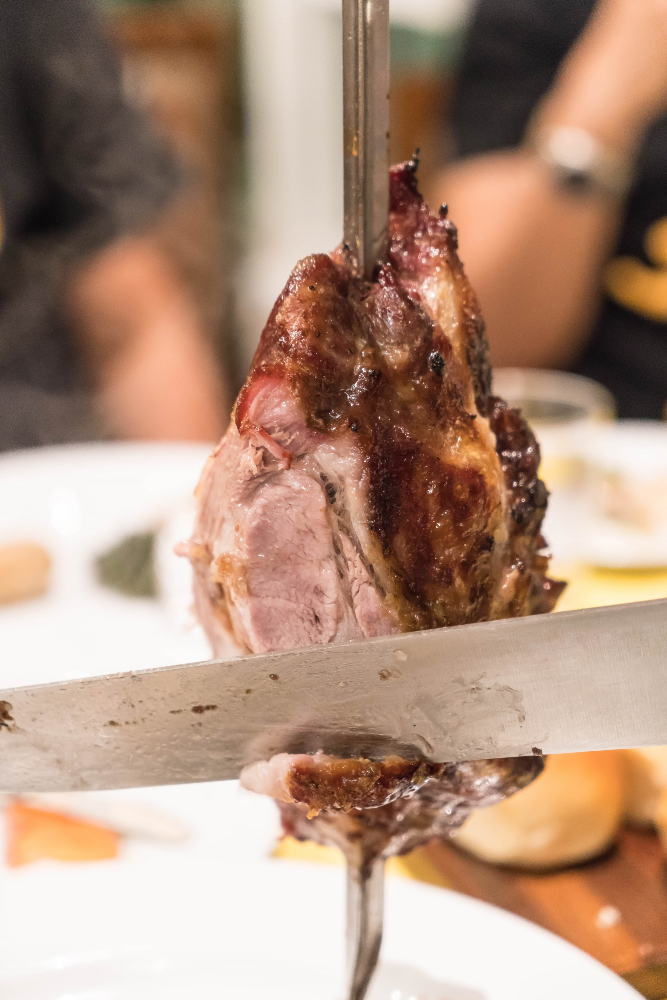What is the best meat to cook on a BBQ rotisserie?
If you’re a fan of backyard barbecues and looking to take your grilling game to the next level, then adding a rotisserie attachment to your BBQ can be a game-changer. The rotating spit ensures that the meat is evenly cooked, resulting in juicy and tender cuts that are sure to impress your guests. But when it comes to choosing the best meat for your rotisserie, there are a few factors to consider.
Factors to consider when choosing meat for a rotisserie
1. Size and weight: The size and weight of the meat play a crucial role in determining how well it cooks on a rotisserie. It’s important to choose cuts that are not too heavy or large, as they may take longer to cook and could end up drying out. Opting for smaller cuts or boneless options is generally a good choice.
2. Tender cuts: For the best results, choose cuts of meat that are naturally tender and have enough fat content to keep them moist during the cooking process. Tenderloin, ribeye, sirloin, and pork loin are popular choices that work well on a rotisserie.
3. Marinating potential: Marinating the meat before cooking can add flavor and tenderness. Certain meats like chicken and pork benefit greatly from marinating, allowing the flavors to penetrate the meat and enhance its taste. Steaks and lamb can also be marinated, although they are flavorful enough on their own.
Best meats for the rotisserie
1. Whole Chicken
One of the most popular choices for a rotisserie is a whole chicken. The rotating spit ensures that the chicken cooks evenly, resulting in crispy skin and tender, juicy meat. To add extra flavor, consider marinating the chicken overnight or using a dry rub before cooking.
“Rotisserie chicken is a classic favorite for a reason – the slow rotation on the spit locks in the juices and infuses the meat with a delicious smoky flavor.”
2. Pork Shoulder
Pork shoulder, also known as pork butt or Boston butt, is another excellent choice for the rotisserie. This cut of meat has enough marbling and fat content to keep it moist and flavorful. Slowly cooking a pork shoulder on the rotisserie will result in succulent pulled pork that can be used in sandwiches or served as a main dish.
3. Leg of Lamb
A leg of lamb is a showstopper on the rotisserie. The slow rotation allows the heat to penetrate the meat evenly, resulting in a perfectly cooked, flavorful roast. The natural tenderness of lamb pairs well with the crispy outer layer that develops during rotisserie cooking.
4. Beef Roast
Beef roast, such as prime rib or ribeye roast, is ideal for a rotisserie. The slow rotation ensures that the meat cooks evenly, resulting in a tender and juicy roast with a caramelized crust. Be sure to season the beef with your favorite herbs and spices to enhance its flavors.
What is the Easiest Meat to Cook on a Rotisserie?
Rotisserie cooking is a fantastic way to prepare juicy and flavorful meats. The slow rotation on a rotisserie spit allows the meat to cook evenly, resulting in tender and succulent dishes. If you’re new to rotisserie cooking and looking for an easy option, there are a few meats that are particularly well-suited for this method.
Chicken
One of the easiest meats to cook on a rotisserie is chicken. Whether it’s a whole chicken or individual pieces like thighs or drumsticks, chicken cooks beautifully on a rotisserie. The rotating motion helps to baste the meat with its own juices, resulting in moist and flavorful chicken that’s hard to beat. Plus, the skin gets crispy and delicious!
Pork Tenderloin
Pork tenderloin is another excellent choice for rotisserie cooking. It is a lean cut of meat that benefits from the slow and even cooking process. The result is a tender and flavorful pork roast that is perfect for sandwiches, salads, or as a main course.
Lamb Leg
If you’re in the mood for something a little more adventurous, a lamb leg on a rotisserie is a showstopper. The slow rotation helps to render the fat, producing a succulent and perfectly cooked piece of lamb. Season it with herbs and spices for a flavorful twist.
“Rotisserie cooking is a fantastic way to prepare juicy and flavorful meats.”
When cooking meat on a rotisserie, it’s important to keep an eye on the internal temperature to ensure it reaches the desired level of doneness. Use a meat thermometer to accurately monitor the temperature and ensure food safety.
Here’s a quick overview of the cooking times for different meats on a rotisserie:
| Meat | Cooking Time |
|---|---|
| Whole Chicken | 1.5 to 2 hours |
| Pork Tenderloin | 45 minutes to 1 hour |
| Lamb Leg | 2 to 3 hours |
In conclusion, while there are many meats you can cook on a rotisserie, chicken, pork tenderloin, and lamb leg are some of the easiest options. Give them a try and enjoy delicious, restaurant-quality dishes right from your own backyard!
How do you make crackle on a rotisserie?
Roast pork crackling is a beloved dish in the UK, with its crispy and satisfying texture. If you’re using a rotisserie to cook your pork, achieving the perfect crackle can be a bit trickier than using other cooking methods. However, with the right technique, you can still achieve that delicious crackling on a rotisserie.
Choosing the right cut of pork
The first step to making crackle on a rotisserie is to choose the right cut of pork. The best options for achieving crackling are cuts with a good layer of fat, such as pork shoulder or pork belly. The fat will render and crisp up during the cooking process, giving you that desired crispy texture.
Preparing the pork
Before cooking, it’s important to properly prepare the pork to help achieve the perfect crackling. Start by scoring the skin with a sharp knife, making cuts about 1cm apart. This will allow the fat to render out and the skin to crisp up more easily. You can also rub a mixture of salt and oil into the scores, which helps to further enhance the crackling.
Cooking on the rotisserie
When it comes to actually cooking the pork on a rotisserie, there are a few things to keep in mind. Firstly, ensure that the heat is evenly distributed around the meat. This will help ensure that the crackling crisps up uniformly. Additionally, it’s important to maintain a consistent temperature throughout the cooking process. If the temperature is too low, the crackling may not crisp up properly; if it’s too high, it may burn before the meat is fully cooked.
Pro tip: For extra flavorful crackling, you can add seasonings such as herbs or spices to the scoring on the pork skin before cooking.
When the pork is cooked through and the crackling is golden and crispy, it’s time to remove it from the rotisserie. Allow the meat to rest for a few minutes before carving, which will help retain its juices. Once rested, carve the pork into slices and serve with your favorite sides.
Making crackling on a rotisserie requires a bit of attention to detail, but the end result is definitely worth it. So next time you use your rotisserie, give it a go and impress your friends and family with a perfect roast pork crackling!
Do you take the skin off rotisserie chicken?
Rotisserie chicken has become a popular choice for convenient and delicious meals, especially in the UK where it is readily available in supermarkets and takeaway spots. However, a common question that arises is whether to take the skin off rotisserie chicken or not. Let’s explore the pros and cons of enjoying this poultry delight with or without its crispy outer layer.
The case for keeping the skin on
One of the main reasons why people prefer to keep the skin on rotisserie chicken is because of the added flavor and texture it brings. The skin is often seasoned with a flavorful rub or marinade, which enhances the taste of the meat. Additionally, when cooked properly, the skin becomes wonderfully crispy and provides a satisfying crunch.
Furthermore, the skin acts as a protective barrier during the cooking process, helping to lock in moisture and prevent the chicken from becoming dry. This makes the meat more tender and juicy, resulting in a more enjoyable dining experience.
The argument for removing the skin
On the other hand, there are valid reasons for opting to remove the skin from rotisserie chicken. Firstly, the skin is high in fat, particularly saturated fat, which may not be ideal for individuals looking to reduce their intake of unhealthy fats. Removing the skin can help lower the overall calorie and fat content of the meal.
Moreover, some people find the texture of chicken skin unappealing or have personal preferences that lead them to avoid it. In these cases, removing the skin allows individuals to fully enjoy the chicken without any compromises.
“I always take the skin off rotisserie chicken as I prefer a healthier option. Plus, the flavor of the meat is delicious enough on its own!” – Sarah, London
Is Rotisserie Chicken Supposed to be Pink?
Rotisserie chicken, a popular and convenient option for many households, is known for its juicy meat and delicious flavors. However, one common question that often arises is whether rotisserie chicken is supposed to be pink.
The Pink Hue
It is important to note that a slight pink hue in rotisserie chicken is generally considered normal. The pink color is typically caused by a pigment called myoglobin found in the muscle fibers of the chicken. When cooked, myoglobin can give the meat a pinkish color, even if it is fully cooked and safe to eat.
According to the United States Department of Agriculture (USDA), properly cooked poultry can sometimes show a pink coloration, even when all parts are fully cooked. This is especially true for younger birds whose muscles contain more myoglobin. It is recommended to use a reliable meat thermometer to ensure the internal temperature reaches a safe minimum of 165°F (74°C) in the thickest part of the chicken.
Signs of Proper Cooking
While some pinkness in rotisserie chicken is normal, there are certain signs you can look for to ensure that the chicken is properly cooked:
- Juices should run clear: When the chicken is pierced with a fork, the juices that come out should be clear, rather than pink or bloody.
- Internal temperature: Use a meat thermometer to check that the internal temperature reaches 165°F (74°C) to ensure it is thoroughly cooked.
- No raw or rubbery areas: The chicken should be firm to touch, with no raw or rubbery areas.
Remember, appearance alone is not enough to determine if rotisserie chicken is fully cooked. Always use a meat thermometer for accuracy and follow recommended cooking guidelines.
Enjoying Rotisserie Chicken Safely
When consuming rotisserie chicken, it is essential to handle and store it properly to prevent foodborne illnesses:
- Refrigeration: Store rotisserie chicken in the refrigerator within two hours of purchasing or cooking. Consume it within 3-4 days, otherwise freeze it for longer storage.
- Reheating: If reheating, ensure the internal temperature reaches 165°F (74°C) to kill any potential bacteria.
- Freshness: Always check the expiration date and look for signs of spoilage, such as an off smell or slimy texture.
In summary, a slight pink hue in rotisserie chicken is generally normal and does not indicate undercooking. However, it’s important to rely on proper cooking techniques, internal temperature readings, and freshness indicators to ensure the chicken is safe to eat. By following these guidelines, you can confidently enjoy your rotisserie chicken without any concerns.
Conclusion
Ultimately, the decision to take the skin off rotisserie chicken comes down to personal preference and dietary goals. If you enjoy the extra flavor and crunch, and are not concerned about the higher fat content, then keeping the skin on can enhance your dining experience. However, if you’re looking for a lighter or healthier option, or simply not a fan of chicken skin, removing it is a valid choice.
Remember, there’s no right or wrong answer here – it all depends on what you prefer. So next time you indulge in rotisserie chicken, whether with or without the skin, make sure to savor every mouthwatering bite!



